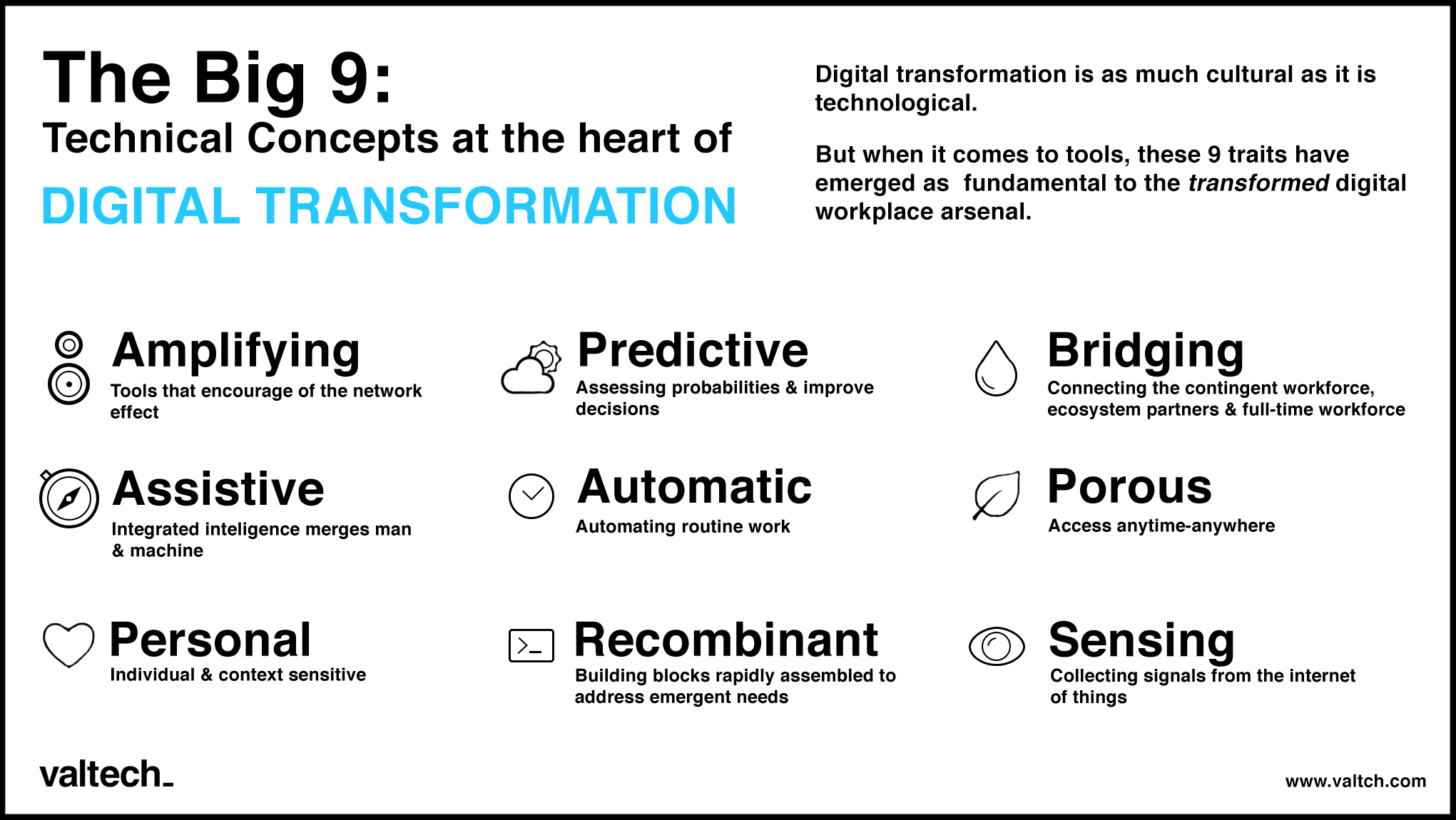It’s hard to put your finger on.
What is digital transformation… really?
We’ve suggested before that digital transformation is as much cultural as it is technological. It’s a shift to a more agile way of working… a pull towards an increasingly fluid definition of the employee and the mode in which they contribute to the organization’s purpose. The digitally-transformed organization embraces and anticipates the customer’s desires on a deeply intimate level. It’s a roadmap to a revised operational model for the digital age.
But today – I don’t want to talk about the cultural or operational side of transformation.
I want to talk about tools.
How is digital transformation any different from what’s been done before? Office workers have benefitted from a computer with internet access for years and even more are now equipped with smartphones.
Isn’t everyone already, in a way, digital?
What’s to transform?
As the fog of war surrounding digital transformation continues to dissipate, a few key concepts seem to be emerging that demarcate the tools of a “digitally transformed” organization. The selection of tools that embrace these concepts – most of which are still on the edge of adoption – will make the greatest impact on workplace productivity, innovation and marketplace relevance in the months and years to come:

1. Amplifying
Encouraging the network effect should be a primary goal for businesses conducting knowledge work. Tools that rapidly disseminate ideas, bridge silos, aid the identification of skills and encourage a culture of continuous learning are increasingly important. Work can be exponentially accelerated and refined as participants tap into, contribute to and make use of the efforts of the collective.
2. Assistive
Integrated intelligence, the combination of human intelligence and machine intelligence to solve complex problems, is another vital horizon for digital workplace. These tools can aid with the extension of memory, distinguish complex patterns and provide competitive insight not previously possible by humans alone. IBM describes this evolving human-computer relationship as not dissimilar to the relationship between violinist and violin: The violin makes the sound, but great power lies in the talents of the violinist to coax the most beautiful music out of it.
3. Personal
The next generation of workplace tools are increasingly context-sensitive. Rather than designed for an archetypal persona, they are finely tuned to your behavior, your context, your needs and informational appetites. Retrieving and consuming information becomes a highly individual affair.
4. Predictive
We are swimming in data and the informational tide will only rise further with time. Using this data to our advantage involves greater use of tools that will allow us to assess probabilities and improve decision-making.
5. Automatic
The inevitable march of progress forever pressures us to do more with less. Technologies that automate the routine elements of white collar work will be an increasingly common outcome of digital transformation.
6. Recombinant
Demand for specialized tools will be fulfilled by citizen developers (those without formal programming skill). Technologies consisting of modular elements that can be recombined in novel ways to rapidly fulfill emergent usage scenarios should be a consideration for those hoping to embrace the digital workplace.
7. Bridging
Employees and other participants within the digital workplace are increasingly transient. The contingent worker and ecosystem partners are a critical element of 21st century business. Tools must effectively orient and effectively capture and index their contributions, even if their participation is short-lived.
8. Porous
Access anytime, anywhere is an important theme of digital transformation. Conversations and work objects must be available beyond the firewall and readily accessed via mobile device.
9. Sensing
The Internet of Things is reshaping our understanding of work – from manufacturing to employee engagement. The capability to capture signals for meaningful interpretation is fundamental to digital workplace.





